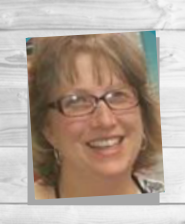
How to Homeschool with the Charlotte Mason Method
May 15, 2019
Charlotte Mason style of education is based on the teachings of Charlotte Mason. Mason was a British educator in the nineteenth century. This approach to education emphasizes good habits and noble ideas. Mason’s teachings and writings were especially geared for parents, governesses and other child-care providers.
Charlotte Mason is Living Education
Charlotte Mason’s philosophy views the child as a person. Good habits and noble ideas help shape them. Not just their minds, but their whole persons and their whole lives. Her motto for students was “I am, I can, I ought, I will.”
- I am: I am a person of great value
- I can: I am able to do everything required of me
- I ought: I ought to be of service to others
- I will: I will choose to do what’s right even if it’s not what I want.
Each child is encouraged to do his best in everything. Learning is a lifestyle with its own reward built in. Education develops the character habits for a well-lived life. Parents nurture and inspire the student’s education. But, the duty to learn belongs to the child–and is called “self-education.”
Food for the Mind
Just as a body hungers for nutrition, so does the mind. Charlotte Mason emphasizes feeding the mind with noble ideas presented in well-written books. She called this kind of literature “Living books.” Learners are surrounded by vivid writings that evoke emotion and draw the reader into the story.
- History is taught chronologically, using biographies, source documents, and well-written history books
- Literature is taught along with history, using books from (or about) the same time period
- Language arts skills are learned through narration, copy work and dictation
- Science emphasizes nature study as a means to know God
- Memorization and narration provide material for the mind to “chew” on.
Living books appeal to all ages and do not have to be compartmentalized by grade level. Copy work doubles as handwriting practice and provides careful attention to grammar and sentence structure. Dictation develops listening and comprehension skills while learning the mechanics of writing. Another noteworthy distinction in a Mason school is the introduction of Plutarch’s biographies in the fifth grade.
Focused Attention
Charlotte Mason education delays formal instruction until age six when children are developmentally ready. Then, students have short lessons where they can focus on excellent execution. If you want a child to remember something, then capture his full attention. Short lessons also allow the student time to mentally digest the instruction.
Unnecessary repetition and busywork are removed. Students do not have homework. Formal lessons can be completed by noon. Afternoon schedules are dedicated to errands, art and lots of unstructured playtime, especially outdoors.
Atmosphere and Environment
First-hand exposure to great and noble ideas thrives in an atmosphere of books. Besides books, children are exposed to great minds through art, music, and nature. It may be more convenient to just stay indoors, watching a nature documentary on television. But children also need the real world experience in nature and the first-hand knowledge for themselves.
Real learning takes place when students follow their curiosity. They invest their time and effort in worthy thought and worthy work. Leisure time environment involves scouting, gardening and other handicrafts (such as knitting, needlework, beading, woodworking.)
Science of Relationships
The Charlotte Mason approach has no separation between intellectual and spiritual life. Mason’s methods are designed to help children see connections between all the subjects. The “secret” to life is that everything is connected to something else. At some point, the child begins to make connections between different things for himself. All knowledge is connected.
Charlotte Mason was a woman of deep personal faith, and her beliefs and values are made very clear in her original writings. Her teachings are founded on a Christian worldview. Education enriches our relationships with God, self, others, ideas, work, and creation. However, this style of education has also been adapted for secular/non-religious homeschoolers.
The foundation of “I am, I can, I ought, I will” develops character habits for a well-lived life. Charlotte Mason graduates become life-long learners who crave intellect, give back to society, and love and care for nature.
Example of a Charlotte Mason Homeschooling Day
Homeschoolers using the Charlotte Mason homeschool teaching style strive to keep variety in their schedules. They generally do academics in the morning and try to “rest the child’s mind” by switching between easy and challenging tasks and between active and passive tasks. The Charlotte Mason method stresses the importance of spending lots of time outdoors (usually in the afternoon) and students are encouraged to keep a nature journal. They also look for the most interesting learning materials available and avoid anything boring. Fridays are reserved for field trips.
- 9-9:20 a.m. Math
- 9:20-9:40 a.m. Handwriting
- 9:40-10:00 a.m. History
- 10-11:00 a.m. Read aloud literature
- 11-12:00 noon Lunch
- 12:00 noon Drill
- 12:20-12:40 p.m. Science
- 12:40-1:00 p.m. Grammar
- 1-1:20 p.m. Latin or music or art appreciation or poetry or P.E.
- 1:20-2:00 p.m. Map Work and read-aloud work by children
- Afternoons are spent outdoors, enjoying nature.
Podcasts About Homeschooling Methods
Is Charlotte Mason right for you?
Kim Andrysczyk – Volunteer Contributor

Kim Andrysczyk is a secular homeschool veteran, homeschool group leader, coffee addict, sarcasm expert, and an accidental blogger. She’s the self-appointed busybody of homeschooling in South Carolina, always on the lookout for new connections to people, places, and resources. Find her at The South Carolina Homeschooling Connection and Facebook.
Latest Posts

While nearly every college and university today is eager to accept homeschooled students into their institutions, homeschooling families need to understand that their student’s application…
Read more >
Guest Post by Gabriel Morse For several years, I sat for long hours every day behind one of those battleship gray desks in a windowless, dull, gray office. The pay was enough to take care…
Read more >
This post is sponsored by Little Monsters Universe. I'm Tina Salmanowitz, an advocate for homeschooling and science education. With over a decade of experience as a science educator (in class…
Read more >

